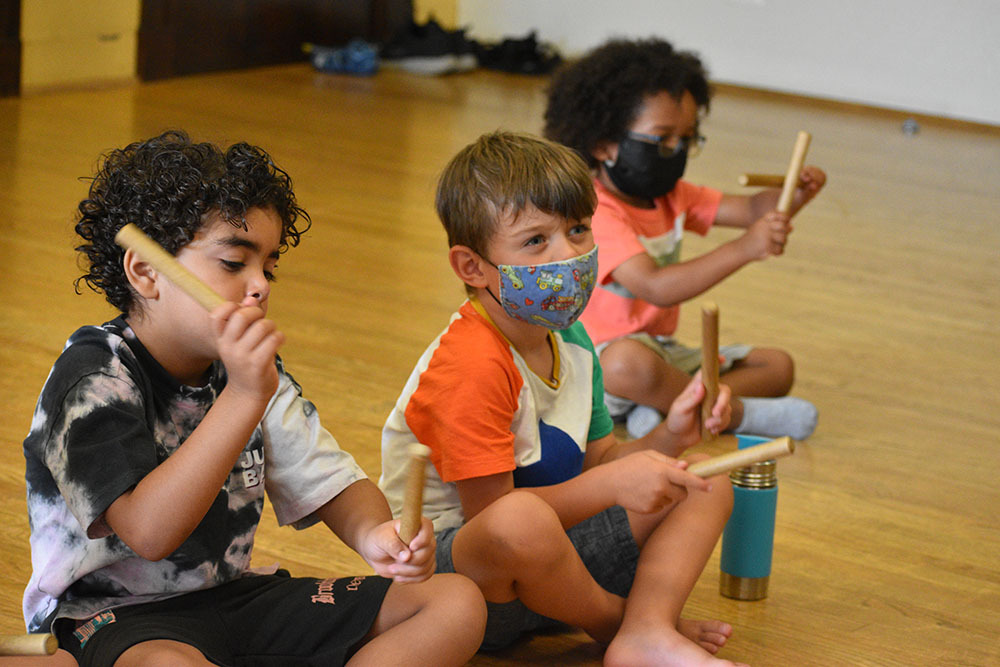Remember performing in the 2nd grade play, or painstakingly sewing that Pac-Man pillow in 6th grade home economics? Perhaps you crafted a bubblegum machine from wood and a mason jar in 8th grade woodshop.
School projects like these are rare today. Decreasing budgets and increasing emphasis on standardized testing have left little time and money for performing or domestic arts education in many of today’s schools.
School districts area wide have cut back performing and visual arts offerings. Home economics and industrial arts programs, where students learn sewing, cooking and woodworking, are nearly extinct.

Many parents are turning to after-
school lessons to give their children the benefits of performing, visual or domestic arts education.
Stress reduction
“The rhythmic nature of needle art tends to have a soothing effect for children,” says Laura Kelly, owner of The Handwork Studio in Narberth, PA, whe
re children take classes in hand and machine sewing, fashion, knitting and other subjects.
Other arts activities can soothe too. “Those who create often find themselves ‘in the zone’ and can lose track of time and be suspended from ordinary concerns,” says Terry Foreman, executive director of Center for the Creative Arts in Yorklyn, DE.
Academic success
“It has been well docum
ented that children involved in fine and performing arts programs are more likely to stay in school and be more engaged in other subjects,” says Foreman.
Research from the Arts Education Partnership shows that arts education has been linked to higher achievement in reading and language skills, mathematics, thinking skills, social skills and motivation to learn.

“If a child has trouble reading, he can express himself by drawing or singing,” says Maud Lyon, president of the Greater Philadelphia Cultural Alliance.
Career preparation
“Arts training of various kinds translates into a myriad of professions that go far beyond the professional painter or art teacher,” says Foreman.
For instance, individuals with fine arts backgrounds can find jobs in advertising, event planning and commercial art. Sewing and handwork skills can lead to jobs in the fashion industry, in the home décor industry and making costumes in the entertainment business.
Etsy.com and other websites have helped artists turn their hobbies into small businesses. Some arts are even in high demand — employment in the
culinary arts is projected to grow faster than the average for all occupations through 2024.
 Arts education can even help in jobs that are seemingly unrelated to art. “I’ve heard business professionals say their background in theater did more for their presentation skills than an MBA,” says Lyon.
Arts education can even help in jobs that are seemingly unrelated to art. “I’ve heard business professionals say their background in theater did more for their presentation skills than an MBA,” says Lyon.
Life skills
Practical arts such as cooking, sewing and woodworking foster other life skills too. “Sewing, knitting and other kinds of handwork help children develop patience, hone motor skills and eye-hand coordination, says Kelly. “By completing a project and observing the rewards of hard work, they build perseverance and creative thinking skills.”
Confidence building
Johanna Outwin, cooking coordinator at Kitchen Kapers in Moorestown, NJ, says when kids “learn how to cook, they love it. They realize they’re able to do it and then they go home and cook what they learned. And they learn not only how to follow a recipe but how to be creative with ingredients.”
“Confidence is key,” says Michael Vogel, founder and president of Philadelphia Woodworks, where kids learn woodworking and build projects in group workshops or private lessons. “It’s a great feeling to learn to use your hands and have a great result. And it’s a great opportunity to engage your head, hands and heart.”
Susan Stopper is a local freelance writer.






